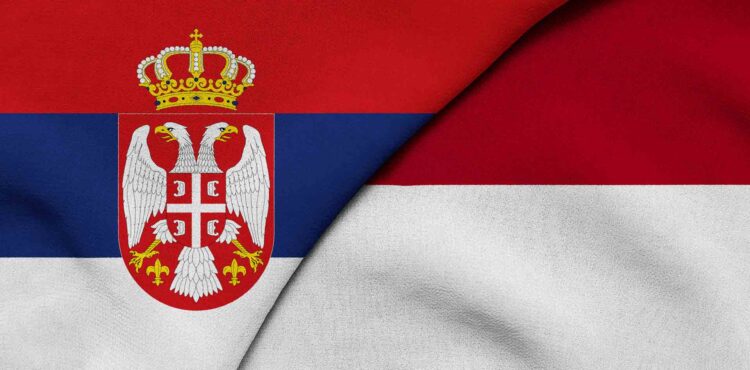THE EXCURSION TO BAČ
NUSANTARA took advantage of warm autumn days of October 2017 to visit southern Bačka – on Sunday, October the 15th, the NUSANTARA Association of Serbian-Indonesian Friendship made an excursion to Bač, Deronje and Odžaci.
In the first capital city of Bačka, which gave its name to this entire region between Tisa and the Danube, NUSANTARA first visited a Franciscan monastery. In the “Black church” dating from 1169, which used to be a Templar temple, and is a Franciscan monastery nowadays, lately renovated with the European Union funds, members of the NUSANTARA Association of Serbian-Indonesian Friendship had an opportunity to see a mihrab remaining from the times when the temple had been transformed into a mosque. The church, in its times described even by Evlija Čelebija in his scripts, although quite imprecisely, according to the words of father Josip Špreher, prides itself on the pneumatic organ, still the strongest in Vojvodina, as well as on the library containing more than 5.000 titles, many of which date back from the 15th century.
Besides the Franciscan monastery, in whose location, as supposed, the first hospital in Pannonia was established, Bač also has a famous fortress from the 14th century that was a real revelation to plenty of members of the NUSANTARA Association of Serbian-Indonesian Friendship. It was built by Hungarian king Charles Robert to stop the pressure of the Serbian empire on the southern border of Hungary. Holes and gaps in the massive walls of the Bač fortress, seen and photographed by members of the NUSANTARA Association of Serbian-Indonesian Friendship that Sunday, were made by Austro-Hungarians trying to expel rebels from the fortress with cannonballs during the Rákóczi’s War of Independence. After being bombed in 1704, the fortress was abandoned as it was no longer in conditions to protect anybody. It’s been among the cultural monuments of exceptional importance to the Republic of Serbia.
The excursion continued with a visit to the Bođani monastery, one of three Orthodox monasteries in Bačka; Bođani stands among the most beautifully decorated Serbian monasteries as well – the garden itself contains more than 130 species of the most diverse plants. Besides wall paintings made by Hristofor Žefarović, “universal Illyrian-Rascian zograph”, in 1737, members of the NUSANTARA Association of Serbian-Indonesian Friendship also discovered within the endowment of merchant Bogdan, Serbian from Dalmatia, finished in 1478, three peculiarities of the fresco painting that differentiate this temple from the rest of Orthodox places of worship in Serbia.
Perspective in the Serbian wall painting was presented for the first time on one fresco from Bođani. The frescoes here are specific also because of the fact that they were elaborated with oil colours applied on dry, not wet mortar, as it had been done in wall painting for centuries. Not less singular is also an arc with frescoes representing biblical scenes from the creation story to the expulsion from paradise.
That Sunday NUSANTARA also visited Mr. Branislav Vasić’s ethnic house in Deronje, village in the municipality of Odžaci. Mr. Vasić produces organic food and manages his 18-hectare large estate all by himself, supplying water by means of two water mills he himself constructed. Apart from a fruit garden with diverse seedlings, the owner of the ethnic house owns also a vineyard with old sorts that used to be planted. Another attraction of the estate in Deronje is a 7 or 8-piece collection of old tractors (old timers) as well – some of the members of the NUSANTARA Association of Serbian-Indonesian Friendship found out in Deronje for the first time that the „Porsche“ company had ever produced tractors, too!
During the lunch at the “Lazar” restaurant in Odžaci, members of the NUSANTARA Association of Serbian-Indonesian Friendship were entertained by players on the “tambura” from Deronje – sons and grandsons of the musicians featuring two anthological films of the Yugoslav cinematography “I Even Met Happy Gypsies” and “It Rains in My Village”. A special attraction of their Sunday performance was playing on a single string, performed by the band formed by the Jovanović family from Deronje.
NUSANTARA ended its Sunday excursion across southern Bačka by tasting officially the best ice cream in the world – the right address for the homemade ice cream of the highest quality is the “Grand” confectionery in Odžaci. The owner of the “Grand” confectionery, Mr. Ćufli Miniri, is a descendant of an Egyptian family living in Serbia for already 800 years and a holder of gold medals for quality in 2010 and 2011.
Biljana Đorđević





